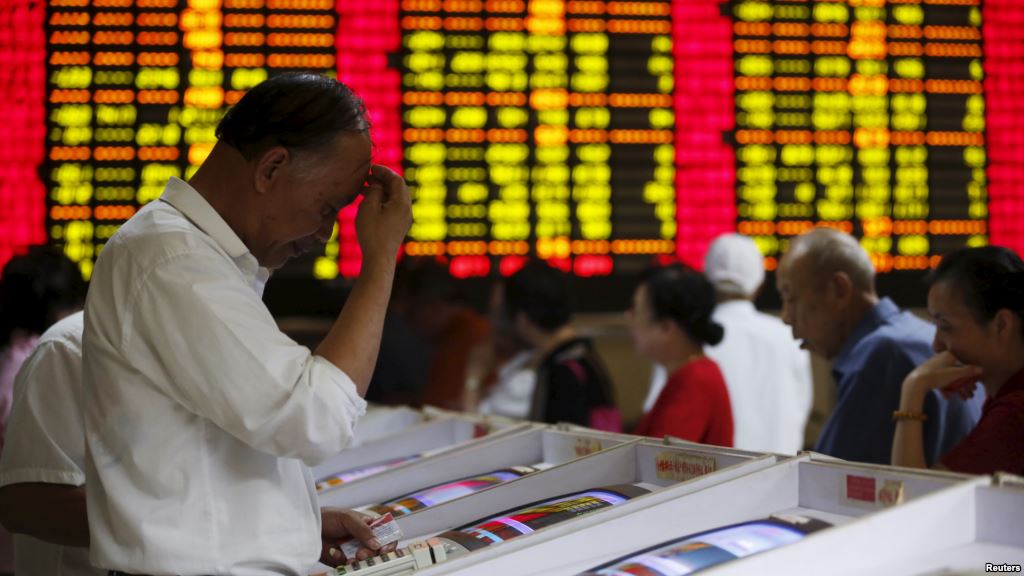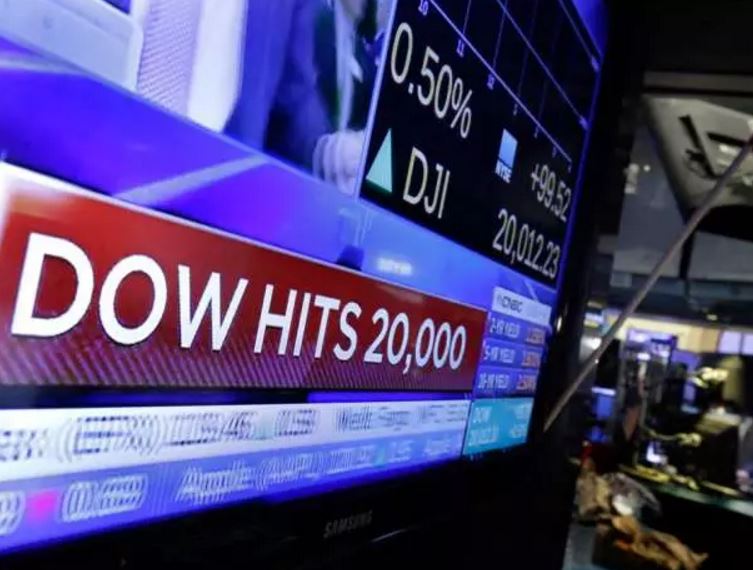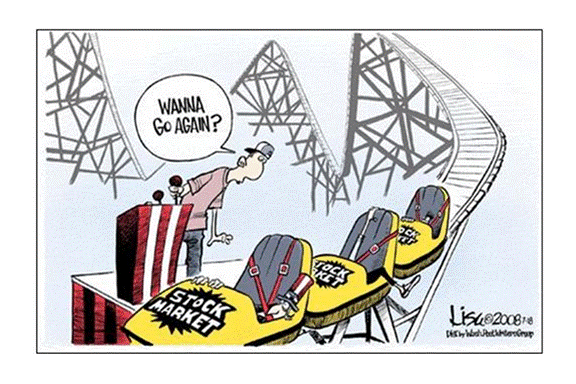 Stocks dropped about 500 points last Friday the 21st.
Stocks dropped about 500 points last Friday the 21st.
Today, Monday morning, stocks dropped roughly 1,000 points but buyers made up for some of that loss later on in the day. Now, the difference is about 475 points.
One immediate point: nature does in fact abhor a vacuum. One man’s tragedy is another’s opportunity. That is, cheap stocks become a bargain. Stick with me. We’ll be back to that in a moment.
Oil took a bit of a hit ($38 a barrel); bad for stockholders but good for consumers. Even in Fornicalia, at ARCO for example, a gallon of gas was $2.75 yesterday. Around here, that was the lowest I’ve seen in at least a year. Just a month ago a gallon of unleaded 87 octane was $3.29.
[In the process of writing to this point, the DOW has gone from -476 to -300.]
China is a factor, Greece was a factor.
Emotions are the greatest factor.
The focus of emotions upon the stock market begs a huge essay at this point and has certainly been addressed by better and more lucid persons than me. But I think I can sum it up in one sentence.
The dollar, the American dollar, is only as solid and stalwart as people think it is.
The stock market is all smoke and emotive mirrors. Thought is the foundational basis for the solidarity of the dollar.
Quick, before we go any farther, click on this link from 2011 for reference to understand the possibility of there being no gold in Ft Knox, and why that matters.
The necessity for the US Bullion Depository at Ft Knox came about by then-President Franklin Delano Roosevelt’s — to be blunt — illegal
Executive Order 6102, which resulted in the physical confiscation of gold in all forms from private American citizens on April 5th of 1933. What is known now as Ft Knox was completed in 1936.
EO 6102 criminalized the possession of physical gold by anyone other than the United States government. People were paid $20.67 per troy ounce for the gold they possessed. People who, then, had large amounts of gold sent it physically to countries such as Switzerland because of various private banking laws.
The US government, of course, realized a profit from EO 6102 and used that money to create the Exchange Stabilization Fund brought about by the Gold Reserve Act in 1934.
The Gold Reserve Act had economic ramifications far beyond national finance. At that time many contracts stipulated that their monetary terms could be demanded in gold.
Such gold clauses were intended to protect against the United States devaluing the dollar.
When the Emergency Banking Act of 1933 and the Gold Reserve Act of 1934 outlawed the use of gold, then such contracts became sources of controversy.
In the gold clause case Norman vs. Baltimore & Ohio Railroad Co., 294 U.S. 240 (1935), the U.S. Supreme Court ruled that gold clauses were invalid. However, Congress later reinstated the option to use gold clauses for obligations (new contracts) issued after October 1977 in accordance with 31 U.S.C. § 5118(d)(2).
A viable country runs on what is called the Gold Standard. Meaning that, basically, whatever paper money exists is backed by an actual physical asset.
Until it isn’t.
Enter Richard Nixon.
The United States stepped completely away from the Gold Standard. All links were finally severed when President Richard Milhous Nixon ended any possible association between gold and the US dollar on August 15th of 1971.
In retrospect, that one move placed this nation — by extension, later, the entire world — into the situation it finds itself now. The die was cast. [A great UK article is here.]
From then on, until today, the dollar has not been “backed” by anything resembling a physical asset, but by trust and confidence.
Let me repeat that again, for those of you who may just have tuned in:
From then on, until today, the dollar has not been “backed” by anything resembling a physical asset, but by trust and confidence. That is to say: emotions. Thoughts. A belief.
And that, ladies and gentlemen, is quite how precariously our current dollar stands.
[As of this point in my writing of the post, the Dow has now corrected up to -150.]
What that means, now, is this: we are experiencing what I believe to be a “correction” in the stock market and not a full-scale meltdown. People fear a meltdown; I fear a meltdown. Rightly so.
But when you have stock sharks who sense a stock vacuum and step in, you don’t have a meltdown. Nature abhors a vacuum. So the stock sharks enter the bloody water and start to purchase the cheaper, recently-devalued stocks.
When the stock sharks cease their incessant circling, that’s when you know you need to stop on the way home for an assload of food and an assload of water. Because that means the stock sharks either think the point-of-no-return has been reached, or they have no liquid assets themselves to be able to move on cheap stocks.
This, here, now, is a correction.
More to come.
BZ
P.S.
At 1500 hrs. PDT, the market ended at -588 points.
 From the WSJ.com:
From the WSJ.com:





